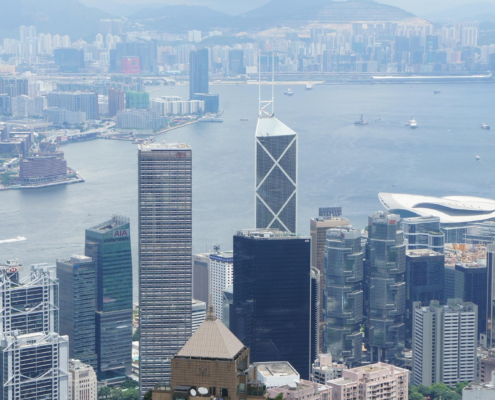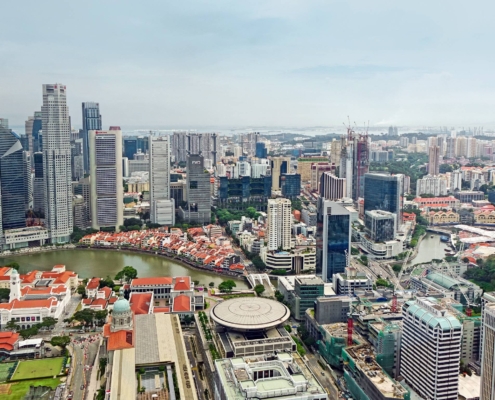 Image by Andrea G. from Pixabay
https://nobilior.com/wp-content/uploads/2025/10/hong-kong-real1.webp
1075
1920
Reza
https://nobilior.com/wp-content/uploads/2025/08/Transparent-logo-nobilior-559x430.png
Reza2025-10-05 09:56:532025-10-05 09:56:54Hong Kong Real Estate Market 2025: Investor’s Guide & Analysis
Image by Andrea G. from Pixabay
https://nobilior.com/wp-content/uploads/2025/10/hong-kong-real1.webp
1075
1920
Reza
https://nobilior.com/wp-content/uploads/2025/08/Transparent-logo-nobilior-559x430.png
Reza2025-10-05 09:56:532025-10-05 09:56:54Hong Kong Real Estate Market 2025: Investor’s Guide & AnalysisIntroduction: The Phoenix Metropolis – Hong Kong’s Market in Transition
The Hong Kong real estate market, long synonymous with stratospheric prices and relentless demand, is undergoing a profound metamorphosis. For decades, the narrative was simple: limited supply, immense demand, and a safe-haven status cemented its position as the world’s most expensive property market. For investors, it was a one-way bet on perpetual growth. As we move through 2025, that narrative has been irrevocably complicated, dismantled, and rebuilt. The market is no longer a monolithic beast but a complex, multi-faceted ecosystem presenting a paradoxical blend of headwinds and historic opportunities.
From an investor’s perspective, the old playbook is obsolete. The strategies that yielded monumental returns in the 2010s are unlikely to be as effective in the latter half of the 2020s. The market has been reshaped by a confluence of factors: aggressive interest rate hikes by the U.S. Federal Reserve, a fundamental shift in mainland China’s economic relationship with Hong Kong, purposeful government policy interventions, and a global recalibration of risk in post-pandemic geopolitics.
This in-depth analysis, crafted specifically for the discerning investor, will dissect the Hong Kong real estate landscape of 2025. We will move beyond the sensationalist headlines of price corrections and explore the underlying currents creating new investment theses. We will delve into the residential sector’s new affordability calculus, the commercial sector’s flight-to-quality revolution, the burgeoning potential of Hong Kong REITs, and the emergence of niche asset classes. This is not a guide for the faint of heart; it is a strategic playbook for those who recognize that the greatest fortunes are often built not during periods of unbridled optimism, but during times of structural change and heightened complexity. Welcome to the new frontier of Hong Kong real estate.
Section 1: The Macroeconomic Backdrop – Decoding the Forces Reshaping the Market
To understand where the Hong Kong property market is headed, one must first appreciate the powerful macroeconomic tides it is navigating. These are not transient trends but structural shifts that will define the investment landscape for years to come.
1.1. The Interest Rate Paradigm and the HKD Peg
The most immediate and palpable pressure on the Hong Kong real estate market in 2025 remains the high-interest-rate environment. The Hong Kong Dollar’s peg to the U.S. Dollar means the Hong Kong Monetary Authority (HKMA) must broadly shadow the interest rate moves of the U.S. Federal Reserve. After years of near-zero rates, the rapid and aggressive hiking cycle that began in 2022 has dramatically altered the cost of capital.
-
Impact on Mortgage Affordability: The best lending rates (BLR) and Hong Kong Interbank Offered Rates (HIBOR) have surged, pushing mortgage servicing costs to multi-year highs. For the average homebuyer, this has significantly reduced purchasing power. A mortgage that was manageable at 2% interest becomes prohibitive at 5.5%. This is the primary driver behind the cooling in the mass residential market.
-
Investor Calculus: For investors relying on leverage, the yield-acquisition equation has been turned on its head. The cap rate (net operating income / property price) on many properties must now compete with virtually risk-free returns from fixed-income instruments. This has compressed yields and forced a more rigorous due diligence process, where positive cash flow is paramount.
-
The “Higher-for-Longer” Scenario: The consensus for 2025 is a “higher-for-longer” interest rate environment. While the peak of the hiking cycle may be behind us, swift and deep cuts are not anticipated. Investors must, therefore, underwrite their deals with the assumption that financing costs will remain elevated, making low-leverage or all-cash purchases significantly more advantageous.
1.2. The Evolving Mainland China Dynamic
Hong Kong’s fortunes have always been inextricably linked to Mainland China, but the nature of that relationship is evolving.
-
Shifting Demand Patterns: The era of mainland Chinese buyers forming long queues outside Hong Kong property showrooms is not over, but it has changed. Economic headwinds on the mainland, capital control measures, and a growing focus on domestic opportunities have tempered the flood of capital. The demand that remains is more sophisticated, targeted, and value-conscious. It is focused on trophy assets in prime locations rather than a broad-based acquisition spree.
-
Policy Integration vs. Financial Hub Status: Initiatives like the Greater Bay Area (GBA) continue to deepen integration, offering long-term potential. However, from a real estate perspective, this can be a double-edged sword. While it creates a larger, more integrated economic zone, it also positions Hong Kong as one node in a network of thriving cities like Shenzhen and Guangzhou, which may compete for capital and talent.
-
Geopolitical Nuances: Hong Kong remains a critical gateway for international capital into China and for Chinese capital going outbound. However, geopolitical tensions have introduced a new layer of risk assessment. Investors are increasingly weighing Hong Kong’s unique “one country, two systems” status against its integration with the national strategy. This has led to a bifurcation in investment sentiment between those who see long-term stability and those who perceive heightened political risk.

1.3. Government Policy: A Deliberate Rebalancing Act
The Hong Kong government has walked a tightrope for years, trying to cool the market without triggering a crash. In 2025, the focus is shifting from cooling to stabilizing and stimulating specific segments.
-
Stamp Duty Revisions: The most significant change has been the full removal of all Additional Stamp Duties (ASDs) for non-first-time home buyers and the easing of the Buyer’s Stamp Duty (BSD) for certain categories of buyers. This policy U-turn, from tightening to loosening, is a clear signal that the government is concerned about a protracted downturn and is actively trying to restore liquidity to the market. For investors, this reduces the transaction cost overhead, making hong kong real estate for sale more attractive for medium-term holds.
-
Land Supply and the Northern Metropolis: The ambitious Northern Metropolis project, aimed at developing vast tracts of land near the Shenzhen border, represents a long-term structural shift. For 2025, it is more of a narrative than an immediate supply factor. However, investors are closely watching the rollout, as it promises to eventually alleviate the chronic land shortage that has underpinned Hong Kong prices for decades, potentially capping long-term appreciation in certain suburban segments.
-
Targeted Support for First-Time Buyers: Policies like the raised loan-to-value (LTV) ratios for first-time buyers under the Mortgage Insurance Programme are aimed at supporting the bottom end of the market, preventing a vicious cycle of negative equity and foreclosures. This creates a potential “floor” for the mass residential market.
Section 2: The Residential Sector – A Market of Tiers and Opportunities
The residential sector, the bellwether of Hong Kong property, is no longer a monolith. It has fragmented into distinct tiers, each with its own dynamics and investment thesis.
2.1. The Luxury Market (HK$50M+): Defying Gravity, But Selectively
The top end of the market often operates in its own universe. In 2025, this segment is showing surprising resilience, but it is highly selective.
-
Trophy Asset Immunity: Ultra-prime properties, particularly those with unique attributes (unobstructed harbour views, historical significance, supreme privacy) on The Peak, in Deep Water Bay, or in Repulse Bay, continue to attract ultra-high-net-worth individuals (UHNWIs). For these buyers, hong kong houses for sale at this level are not just investments; they are trophy assets, status symbols, and safe-haven stores of value. Price sensitivity is lower, and all-cash deals are common.
-
The “Flight-to-Quality” in Luxury: There is a clear bifurcation within the luxury segment itself. Older, less well-maintained buildings in good locations are seeing steeper price corrections and longer marketing times. In contrast, brand-new, developer-built luxury projects with world-class amenities, concierge services, and green building certifications are holding their value much better. Investors should focus on quality over mere location.
-
Rental Market Strength: With high interest rates deterring purchases for some wealthy individuals, the luxury rental market has remained robust. Yields, while still low by global standards (often 2-3%), are more stable than in the mass market, providing a steady income stream for investors who can afford the high entry point.
2.2. The Mass Market (HK$10M – HK$30M): The Epicenter of Correction and Opportunity
This is the segment that feels the full force of interest rate hikes and economic uncertainty. It is also where the most compelling value opportunities may be emerging for patient investors.
-
The Great Repricing: This segment has undergone the most significant price correction since the peak. We are seeing prices for condos for sale hong kong in areas like Tung Chung, Tseung Kwan O, and parts of the New Territories fall by 20-25% or more from their highs. This has brought the market closer to affordability for local end-users, though mortgage costs remain a hurdle.
-
The End-User is King: In this environment, investment strategies must be realigned. Flipping for quick capital gains is a high-risk strategy. The viable approach is to target properties that are attractive to the end-user rental market. Look for well-sized units (500+ sq. ft.), in developments with good facilities, and, crucially, close to MTR stations. Proximity to public transport is non-negotiable for the mass-market tenant and buyer.
-
Yield Compression and Recovery: As prices have fallen, gross rental yields have begun to creep up from their historic lows of ~2% to a more palatable 3-3.5% in some cases. While this still may not cover a high-interest mortgage, it represents a move in the right direction. For an investor with significant equity, a 3.5% yield in a market with potential for long-term capital appreciation can be an attractive proposition.
2.3. The Micro-Units (Under HK$10M): A Fading Star?
The phenomenon of nano-flats and micro-units (under 200 sq. ft.) that boomed in the previous decade is facing severe challenges.
-
Shifting Preferences: The post-pandemic world has permanently altered living preferences. The demand for space, both inside the home (for working remotely) and outside (in the form of communal areas), has increased dramatically. A cramped micro-unit is the antithesis of this trend.
-
Government Intervention: The government has introduced minimum size requirements for new flats on government land sales, effectively spelling the end of new nano-flat supply. This will, over time, make existing micro-units a niche product, but it also risks stranding current owners as market sentiment moves decisively towards larger, more livable spaces.
-
Investment Outlook: This is a high-risk segment. While the initial entry cost is low, the potential buyer and tenant pool is shrinking. Investors should be extremely cautious and only consider these if they are in absolutely prime, central locations where the “location over size” argument still holds some weight.
Section 3: The Commercial & Retail Sector – A Tale of Two Cities
The commercial real estate sector is experiencing its own dramatic upheaval, driven by technological change and shifting consumer behaviors.
3.1. Office Market: The Flight-to-Quality Intensifies
The Hong Kong office market is in the midst of a fundamental restructuring.
-
The Grade-A Premium: There is a stark and growing divergence between premium Grade-A offices in core central business districts (CBDs) like Central and Admiralty, and everything else. Major international corporations, financial institutions, and law firms are consolidating their operations into newer, greener, and more technologically advanced buildings. They are willing to pay a premium for spaces that support ESG (Environmental, Social, and Governance) goals, enhance employee well-being, and project a modern corporate image. Vacancy rates in these top-tier buildings remain remarkably low.
-
The Struggling Secondary Stock: Older Grade-B and Grade-C offices, particularly in decentralized locations, are facing soaring vacancy rates and significant rental declines. The work-from-home hybrid model has allowed companies to rationalize their footprint, and they are choosing quality over quantity. For an investor, this means that an office building is no longer a generic asset class. Due diligence must focus on the building’s age, specifications, ESG rating, and amenity offerings.
-
Decentralization Trend: Areas like Quarry Bay and Wong Chuk Hang, which were once seen as affordable alternatives, are now also experiencing softness as demand overall contracts. However, these areas may present long-term conversion opportunities (e.g., to co-living or hotels) as their values adjust.
3.2. Retail Market: The Rebirth of the Neighborhood
The retail sector, hammered by the pandemic and the loss of mainland tourist spending, is rebounding, but in a new form.
-
The End of the Luxury “Duty-Free” Model: The days of mainland tour buses lining up outside luxury boutiques in Tsim Sha Tsui and Causeway Bay are not returning to their previous glory. The high-end luxury sector is adapting to a more localized and experiential model.
-
The Rise of the Community Mall: The strongest-performing retail sub-sector is the neighborhood mall catering to local residents. Supermarkets, health and wellness stores, F&B outlets, and childcare centers are thriving. People are spending more time and money in their local communities. For investors, this makes retail spaces in large, well-populated residential hubs like Olympic, Kowloon Station, and Taikoo Shing highly resilient income-generating assets.
-
Experiential and F&B-Driven Retail: Successful retail is no longer just about selling products; it’s about selling an experience. Landlords are actively curating tenant mixes to include popular restaurants, cafes, cinemas, fitness studios, and interactive showrooms to drive footfall. Retail properties that can facilitate this experiential shift will outperform.
Section 4: Hong Kong REITs – The High-Yield Gateway for 2025
In a high-interest-rate environment, Hong Kong REITs (Real Estate Investment Trusts) have emerged from the shadows to become a compelling investment vehicle for a broad range of investors.
4.1. Why HK REITs Are Shining in 2025
-
Compelling Yields: As HK REIT unit prices fell in response to rising rates, their distribution yields have surged. It is now common to find blue-chip Hong Kong REITs offering distribution yields between 5% and 7%, a significant premium to both government bonds and the dividend yields of many blue-chip stocks.
-
Regulatory Safeguards: Hong Kong REITs are heavily regulated. They are required to distribute at least 90% of their taxable income to shareholders, providing a high level of income transparency. They also have limits on development activities and leverage, reducing operational risk.
-
Liquidity and Diversification: Buying a REIT is far more liquid and requires far less capital than purchasing a physical property. It also offers instant diversification across a portfolio of properties, which might include a mix of retail malls, offices, industrial parks, and hotels, managed by professional teams.
4.2. Key REITs to Analyze in the Current Climate
-
Link REIT (823.HK): The largest hong kong reits player, focused on community retail malls and car parks. Its fortunes are directly tied to the resilient local consumption story. Its massive scale and active asset management provide a relatively stable income stream.
-
Champion REIT (2778.HK): A pure-play office REIT with trophy assets like Three Garden Road in Central. Its performance is a direct bet on the strength of the premium Grade-A office sector. Its high yield reflects market concerns over the office sector overall, making it a potentially high-risk, high-reward play.
-
Prosperity REIT (808.HK): Focused on retail and office properties, often in non-core locations. It typically offers one of the highest yields in the sector, reflecting the higher perceived risk of its asset portfolio. It is a play on the recovery of Hong Kong’s broader economy.
4.3. The Interest Rate Sensitivity of REITs
It is crucial to understand that REITs are not immune to interest rate risk. Higher rates increase their borrowing costs and can make their yields less attractive compared to bonds. Therefore, investors should look for REITs with strong balance sheets, low debt-to-asset ratios, and well-staggered debt maturities to mitigate this risk.
Section 5: Emerging Niche Sectors and Future-Proofing Your Portfolio
The astute investor looks beyond the traditional sectors to where future demand is being created.
-
Data Centers: As the digital economy expands, the demand for data storage and processing power is insatiable. Hong Kong’s status as a regional tech hub and its connectivity make it a prime location for data centers. This is a highly specialized sector with high barriers to entry but offers strong, covenant-backed income streams.
-
Logistics and Cold Storage: The e-commerce boom and the need for sophisticated supply chains, particularly for temperature-sensitive goods (pharmaceuticals, high-end foods), are driving demand for modern logistics facilities. Vacancy rates are low, and rental growth is robust.
-
Co-Living and Student Housing: The high cost of living in Hong Kong creates a persistent demand for affordable, flexible, and community-oriented housing solutions. Purpose-built co-living spaces for young professionals and high-quality student housing near universities are niche but rapidly growing sectors with the potential for superior yields.
Section 6: The 2025 Investor’s Strategic Toolkit: Actionable Advice
Synthesizing this complex landscape, here are the key strategic takeaways for different investor profiles.
-
For the High-Net-Worth Individual (HNWI): Focus on trophy residential assets or prime Grade-A office spaces. Your strategy is capital preservation and long-term appreciation. Leverage is optional; quality is mandatory.
-
For the Institutional Investor: Look towards the niche sectors like data centers and logistics. Alternatively, consider large-scale portfolio acquisitions of discounted non-core assets (older offices, distressed retail) with a plan to repurpose or redevelop them. Hongkong real estate at a portfolio level offers scale.
-
For the Retail Investor: Hong Kong REITs are your most efficient and accessible entry point. Conduct thorough due diligence on the REIT’s portfolio composition, debt profile, and management quality. Dollar-cost averaging into a basket of REITs can be a smart strategy to navigate market volatility.
-
For the Value/Contrarian Investor: The mass residential market presents opportunities. Focus on finding well-located, slightly older but well-maintained buildings in core residential hubs where prices have corrected significantly. Your tenant pool is strong, and your entry point will be far more attractive than it was three years ago.
Conclusion: Cautious Optimism in a Recalibrated Market
The Hong Kong real estate market of 2025 is not the unassailable fortress it once was. It is a market in transition, characterized by corrected valuations, higher costs of capital, and a more discerning demand profile. The era of easy, guaranteed returns is over.
However, to declare the market dead would be a profound mistake. Hong Kong’s fundamental pillars – its rule of law, its status as a global financial center, its low taxes, and its deep capital markets – remain largely intact. What has changed is the requirement for sophistication, research, and a long-term horizon.
For the investor armed with knowledge, patience, and capital, this new frontier is ripe with opportunity. The key is to eschew the outdated narratives and embrace the market’s new complexity. By focusing on quality, income resilience, and strategic niches, one can navigate the headwinds and position a portfolio to thrive in the next chapter of the Hong Kong property story. The phoenix is transforming, and from its ashes, a more mature, more nuanced, and ultimately more investable market is rising.

 Image by
Image by 